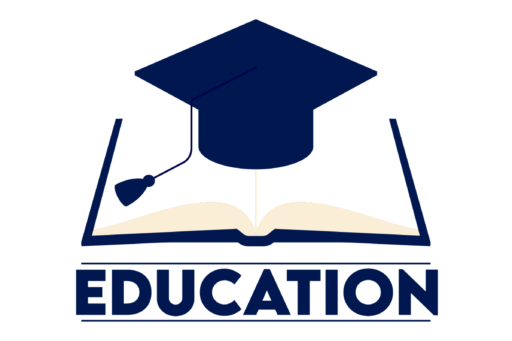Financial Literacy for Students Financial literacy is a fundamental life skill that is often overlooked in traditional education. For students, understanding basic financial concepts—such as budgeting, saving, debt management, and investing—can set the foundation for a financially secure future. Financial literacy empowers students to make informed decisions about their money, avoid debt pitfalls, and set achievable financial goals. With the rising costs of education, the growing complexity of credit, and the need for financial independence, it’s more important than ever to start teaching financial literacy at a young age. This blog explores the essential aspects of financial literacy for students, its benefits, and practical ways to build these skills for lifelong financial health.
1. What is Financial Literacy?
Financial literacy is the ability to understand and apply financial skills, including personal finance management, budgeting, and investing. For students, financial literacy covers basic principles such as income, expenses, savings, debt, and investment. While financial knowledge has always been valuable, today’s students face unique financial challenges that make these skills essential.
Financial literacy for students means learning to set up a budget, understanding the implications of student loans, managing credit cards, and preparing for long-term financial goals like investing or retirement savings. Learning these concepts early helps students develop responsible financial habits that will benefit them as they transition from school to adult life.
Example: A financially literate student might create a monthly budget to track expenses, prioritizing essentials like textbooks and transportation over non-essentials.
2. Why is Financial Literacy Important for Students?
Financial literacy is crucial for students as it equips them with tools to manage their money responsibly and make informed choices. Students who understand personal finance are better prepared to handle the costs of education, avoid excessive debt, and plan for future needs.
For many students, college is their first experience with financial independence, often accompanied by exposure to student loans, credit cards, and living expenses. Without a foundation in financial literacy, students can easily fall into debt, struggle to manage expenses, or miss opportunities for savings and investment.
Furthermore, financial literacy promotes confidence and independence, enabling students to make informed financial decisions. They are more likely to avoid high-interest debt, save for emergencies, and develop a habit of investing for long-term goals, giving them an advantage as they enter the workforce.
Statistical Insight: Studies show that students with higher financial literacy are less likely to default on student loans, have higher credit scores, and are more likely to build savings habits early.
3. Key Financial Literacy Concepts for Students
Financial literacy for students involves understanding several key concepts that lay the groundwork for managing personal finances effectively:
- Budgeting and Expense Management: Learning how to create and stick to a budget is one of the most crucial financial skills. Students should understand how to allocate their income, prioritize needs over wants, and track spending to avoid unnecessary expenses.
- Saving and Emergency Funds: A habit of saving, even a small amount, helps students prepare for unexpected expenses and avoid borrowing for emergencies. Teaching the concept of an emergency fund early encourages financial resilience.
- Understanding Credit and Debt: Credit cards and loans are common financial tools, but they can lead to debt if mismanaged. Students should understand how credit works, the importance of paying off balances on time, and how to avoid high-interest debt traps.
- Introduction to Investing: Although investing may seem complex, introducing the basics of investing in stocks, bonds, and mutual funds can help students start building wealth early. Compound interest, for example, is a powerful concept that students can benefit from by beginning to invest even small amounts.
- Financial Goal Setting: Setting achievable financial goals, such as saving for a laptop or building a travel fund, teaches students discipline and the value of delayed gratification.
Example Activity: Teachers could help students create a mock budget that accounts for hypothetical income, savings goals, and regular expenses, giving them a hands-on understanding of financial planning.

4. The Benefits of Financial Literacy for Students
Teaching financial literacy to students has numerous long-term benefits:
- Financial Independence and Confidence: Financially literate students feel more confident managing their own money, leading to financial independence earlier in life.
- Better Decision-Making Skills: Students learn to weigh financial decisions carefully, from deciding whether to take out loans to making wise spending choices, helping them avoid common financial mistakes.
- Reduction in Debt: Students who understand credit and debt management are less likely to fall into the trap of high-interest debt. This knowledge also helps them make informed decisions about student loans and other forms of borrowing.
- Increased Opportunities for Wealth-Building: Understanding the basics of investing and savings can set students on a path to wealth accumulation and long-term financial security.
- Improved Financial Well-Being: With a foundation in financial literacy, students are more likely to manage their finances well, reducing stress and creating a more stable financial future.
Example Story: A student who learned budgeting and saving early on was able to build a small emergency fund, allowing them to cover unexpected car repairs without resorting to credit.
5. Challenges in Teaching Financial Literacy to Students
Despite its importance, teaching financial literacy to students faces several challenges:
- Lack of Standardized Curriculum: Financial literacy is often not a mandatory subject in school curricula, leaving many students without access to formal financial education.
- Limited Resources and Trained Educators: Many schools lack resources or trained teachers to provide financial literacy programs, making it difficult to deliver consistent, high-quality financial education.
- Complexity of Financial Topics: Concepts like interest rates, credit scores, and investing can be challenging for younger students. Simplifying these ideas without losing depth can be difficult.
- Socioeconomic Differences: Students from different socioeconomic backgrounds may have varying levels of exposure to financial concepts, which can influence their understanding and attitudes toward money.
- Keeping Financial Literacy Relevant: Financial literacy must evolve with the changing economic landscape, including topics like digital banking, cryptocurrency, and online fraud, which requires ongoing updates to curricula.
Example: While some schools have begun offering personal finance courses, not all students have access to these classes, resulting in unequal financial education across different schools and districts.
6. Practical Tips for Building Financial Literacy
Here are some practical ways to build financial literacy for students:
- Start with Budgeting Basics: Encourage students to keep track of their income and expenses, either with a notebook or using budgeting apps designed for beginners. This helps them become conscious of where their money goes.
- Use Simulated Financial Situations: Teachers and parents can introduce role-play scenarios where students practice financial decision-making, such as managing a budget or handling unexpected expenses.
- Introduce Savings Goals: Help students set small savings goals, such as saving for a new book or a day out, to encourage discipline and planning.
- Teach the Basics of Banking: Introduce students to the fundamentals of bank accounts, debit cards, and how interest works. Some banks offer student-friendly accounts that provide educational resources.
- Leverage Online Resources and Games: Many online resources, games, and apps are designed to teach financial concepts in a fun, engaging way, like simulated investing games or budgeting challenges.
Example Activity: Teachers could organize a “financial literacy week” where students participate in activities like budgeting competitions or financial trivia, making learning both interactive and competitive.

Conclusion
Financial literacy is essential for students as they prepare to navigate the complexities of adult life. By learning about budgeting, saving, managing debt, and even basic investing, students gain valuable skills that will support their financial well-being for years to come. Educators, parents, and communities can play a vital role in providing young people with the tools to make informed financial choices, setting them on the path to financial independence. As students build these habits early, they’ll be better prepared to handle challenges, take advantage of opportunities, and create a secure financial future.

